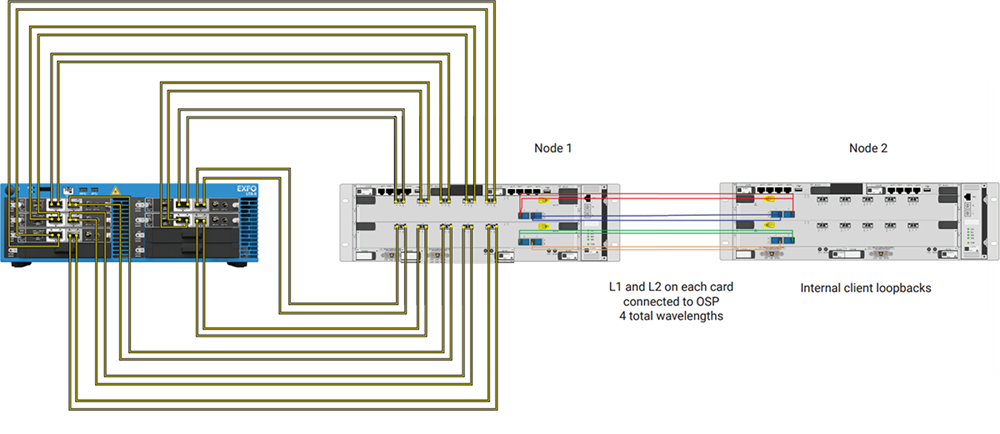Download a two-hour 4K video in 0.8 seconds?
But are these ultra-high-speed next-gen networks truly viable? That’s what EXFO, C Spire—Mississippi’s leading broadband communications provider—and Nokia Bell Labs set out to discover in a groundbreaking demo for the Mississippi Optical Network (MissiON), a private optical network serving the state’s science and technology research and development arm.
Putting terabit-speed networks to the test
Wait, hasn’t this been done before? Sure, previous lab demos have proved that 1 Tb of traffic could be generated and transmitted in one second. Easy. However, no one had been able to prove claims of technology that could generate, monitor and test these next-gen speeds—at least not until now. And as the communications industry’s test, monitoring and analytics experts, we just couldn’t let this one pass.
Providing America’s first terabit-speed research network
The demo, led by C Spire, came on the heels of its complete technology overhaul of MissiON. As the next step in its long-term vision to provide the nation’s first terabit-speed research network, C Spire approached EXFO to help by providing high-speed testing equipment for their trial, which used fiber optic connections to link two Mississippi State University (MSU) data centers.
EXFO’s contribution to this groundbreaking demo was to generate one full TbE (Terabit Ethernet, which equates to 1000 Gbit/s) with five combined 100G dual-port test modules (FTBx-88200NGE Power Blazers). The high-speed traffic was injected into the simulated network and then returned to EXFO’s test platform to validate data transport and critical performance parameters.

Diagram of the test setup: how EXFO were simulating 1 Terabyte traffic round trip to Nokia Bell Lab equipment.
“With this simulation, we were able to successfully test the first terabit-speed connections on a Mississippi university campus and demonstrate the viability of ultra-high-speed networks not only from the perspective of traffic generation but also testing and monitoring,” said Anabel Alarcon, Product Specialist at EXFO. “We had this trial up and running in 15 minutes—without a glitch. If it’s any indication of the future, bring it on! It goes without saying that we are very excited and optimistic!”
A collaboration that matches EXFO’s values and mission
EXFO is proud to support the launch of leading-edge technology of all kinds, work side by side with visionary decision makers and drive advanced research and development initiatives like MissiON. Being part of such collaborations is what makes EXFO tick, and it’s always a great honor to be called on as a trusted adviser.
“As a pioneer in network test, monitoring and analytics, EXFO is glad to contribute its high-speed transport test expertise to such a forward-looking project,” said Stéphane Chabot, Vice President of Test and Measurement at EXFO. “Future-proofing tomorrow’s network infrastructure and supporting research leaders, such as the MissiON partners, is at the core of EXFO’s vision and values.”
Ahead of the curve
At EXFO, we like to stay ahead of the game. That’s why we’re already looking ahead to the next Ethernet craze—1.6 Tb. We simulate equipment that doesn’t yet exist so that when the time comes, we can serve our customers into the next frontier and beyond.
But let’s back up a moment. The year is 2018, and our current 400G ecosystem already brings its fair share of challenges with 400GE, FlexE and FlexO, not to mention all the different transceivers on the market. The good news is we’re equipped to meet all your network needs now. So, until terabits become the norm, and while you’re waiting for that 4K video to download—um, this may take a while—why not check out our 400G solutions?




